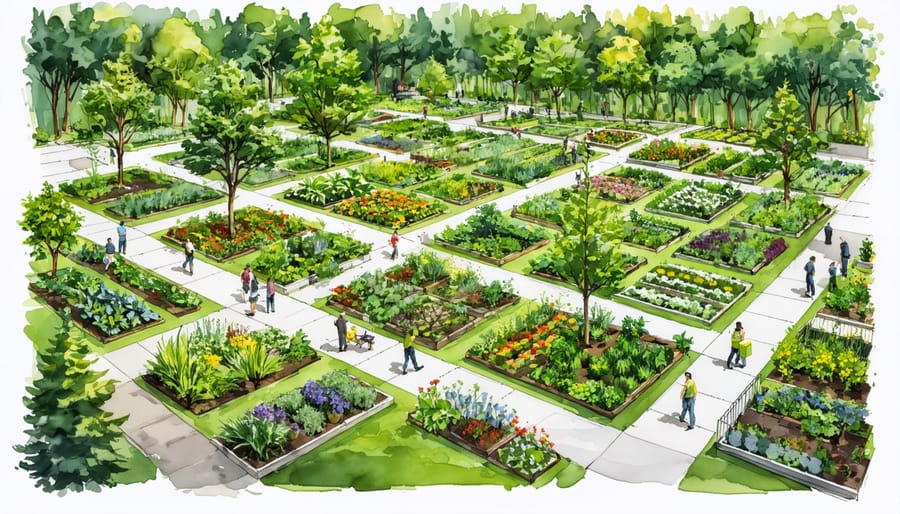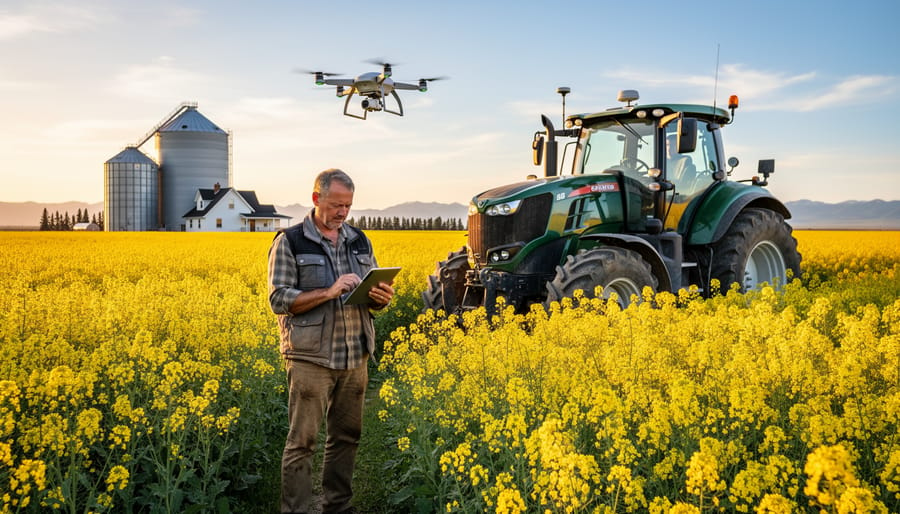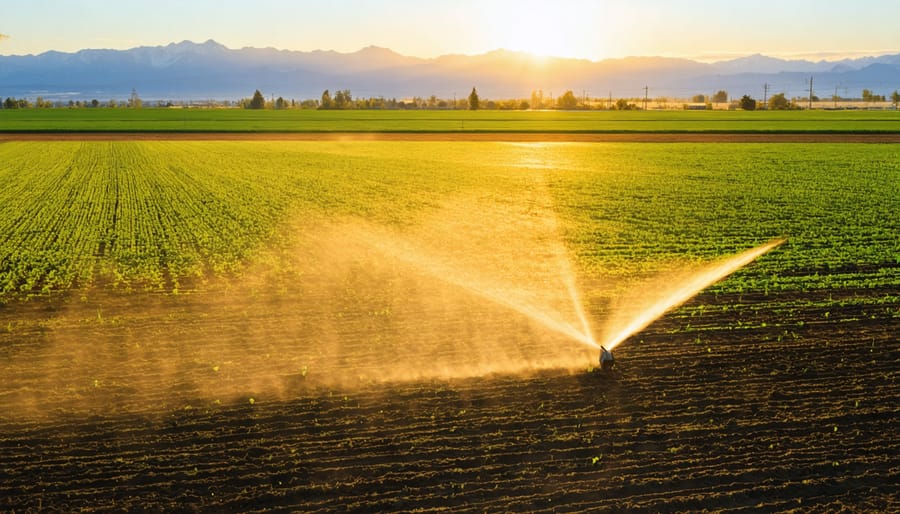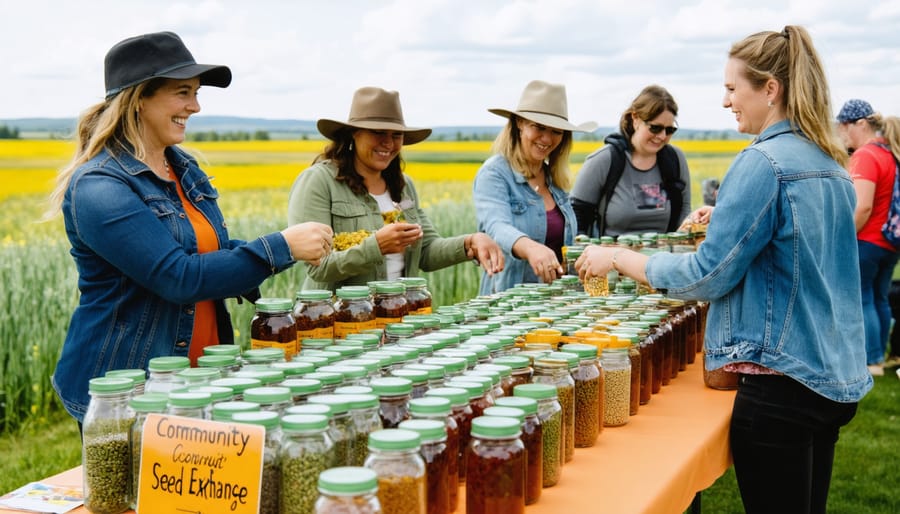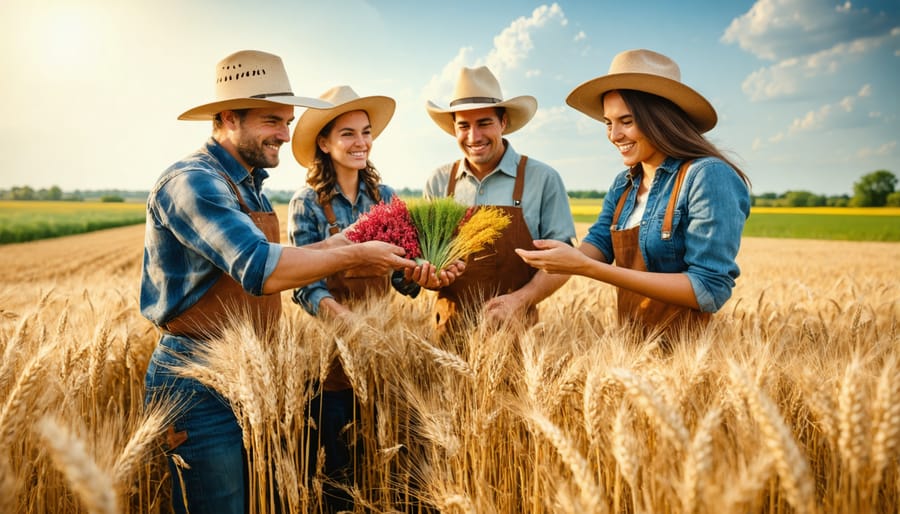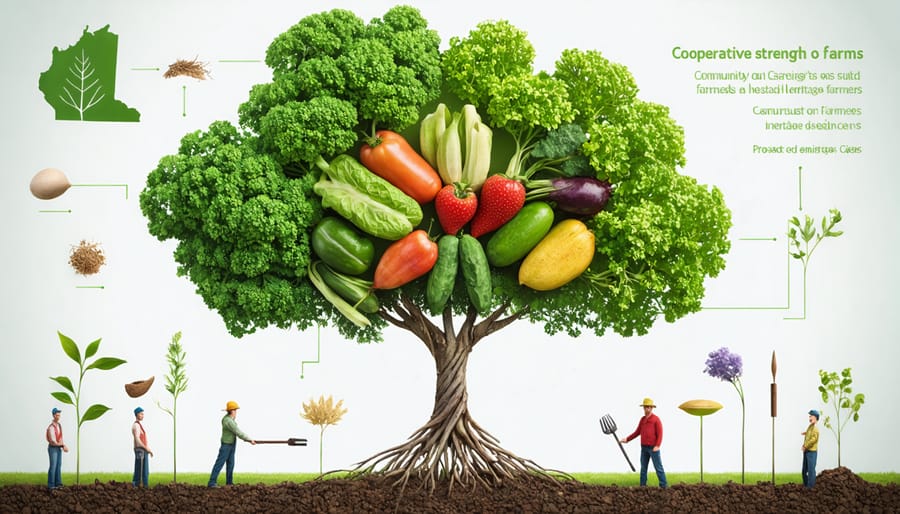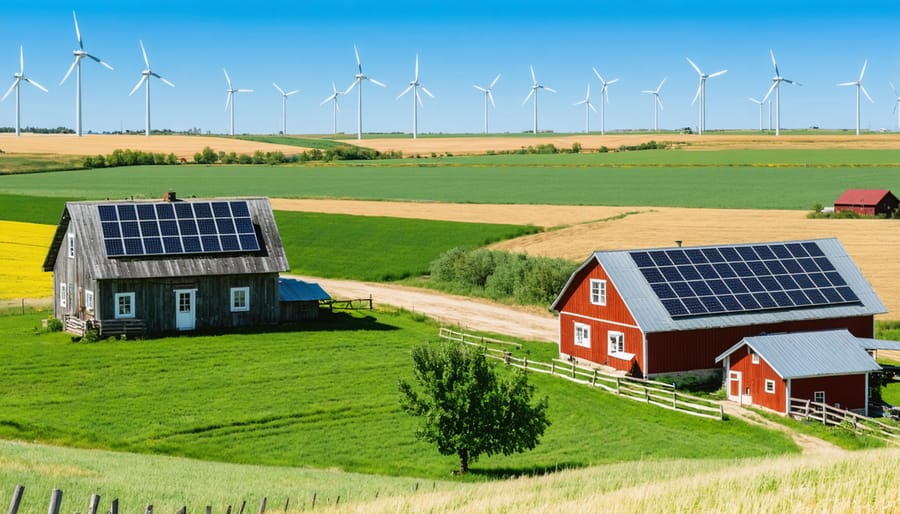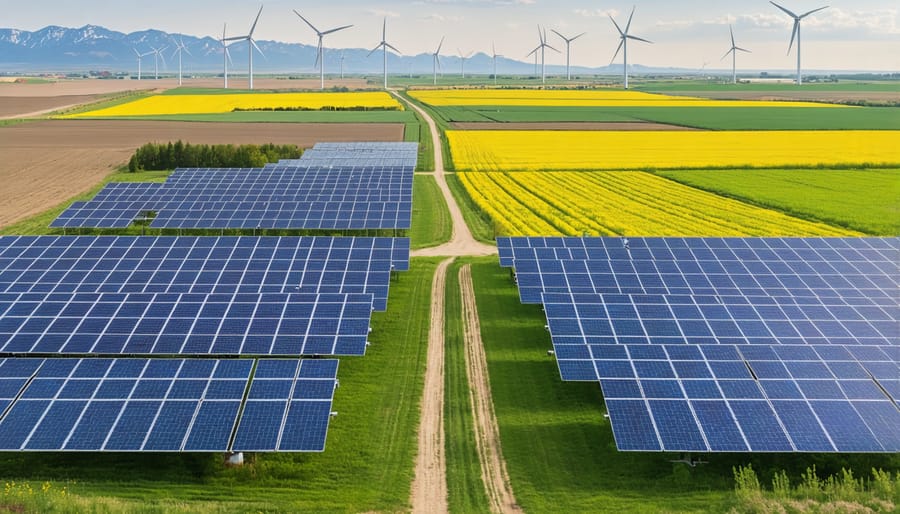Urban community forestry transforms neighborhoods into vibrant, sustainable ecosystems while building stronger social connections among residents. From the shaded streets of Vancouver to the windbreaks of Edmonton, Canadian communities are discovering how collaborative tree planting initiatives create lasting environmental and social impact.
In Alberta’s unique climate, where harsh winters and dry summers challenge urban greenspaces, community forestry projects serve multiple critical functions. These initiatives reduce urban heat islands, provide wildlife habitat, manage stormwater runoff, and create natural windbreaks that protect homes and reduce energy costs. More importantly, they empower residents to take direct action in improving their local environment.
The success of urban community forestry lies in its collaborative approach. Local governments provide resources and expertise, while community members contribute their time, knowledge of neighborhood needs, and ongoing stewardship. This partnership model ensures that urban forests reflect local values while meeting professional standards for tree selection, placement, and maintenance.
As climate change intensifies weather extremes across Canada, community-led urban forests offer a practical, cost-effective strategy for building resilient cities. By combining traditional forestry practices with community engagement, these projects create lasting green infrastructure that serves both current residents and future generations.
Building Edible Forests in Urban Spaces
From Empty Lots to Food Forests
Alberta’s urban forest initiatives have transformed numerous vacant lots into thriving food forests, demonstrating the power of community-driven environmental change. In Edmonton, the Old Strathcona Community Garden project stands as a remarkable example, where local residents converted a 0.4-hectare abandoned lot into a productive food forest featuring over 30 species of fruit trees and native plants.
The Bridgeland Food Forest in Calgary represents another success story, where community members collaborated with the City Parks Department to establish a mixed-use green space. Since its inception in 2018, this 0.2-hectare plot now produces local fruits, nuts, and herbs while serving as an educational hub for sustainable urban agriculture.
Medicine Hat’s River Flats Food Forest showcases how desert-like conditions can support thriving food forests. Through careful species selection and water conservation techniques, this community project produces saskatoons, chokecherries, and hardy apple varieties adapted to the local climate.
These projects share common success factors: strong community engagement, partnership with municipal authorities, and systematic planning. The Strathcona project, for instance, engaged over 200 volunteers in its first year and now serves as a model for other communities. Regular workshops and harvest festivals help maintain community interest while ensuring project sustainability.
Local indigenous knowledge has played a crucial role in these initiatives, particularly in selecting native species and understanding traditional food preservation methods. These food forests now serve as living laboratories for climate adaptation and community resilience.

Native Species That Thrive in Alberta’s Climate
Alberta’s unique climate supports a diverse range of native species that are perfectly adapted to our local conditions. White Spruce and Lodgepole Pine are excellent evergreen choices for urban forest gardens, providing year-round greenery and wildlife habitat. These species are particularly resilient to our cold winters and can thrive with minimal maintenance.
For deciduous options, Trembling Aspen and Paper Birch offer beautiful seasonal changes while supporting local biodiversity. Manitoba Maple, despite its name, is another hardy Alberta native that provides excellent shade and helps manage urban heat islands. The Mountain Ash, with its bright berries, attracts birds and adds visual interest throughout winter.
Understory species like Red-Osier Dogwood and Common Snowberry create vital layers in the urban forest ecosystem. These shrubs provide food for wildlife and help prevent soil erosion. Native fruit-bearing species such as Saskatoon Berry and Wild Red Raspberry offer edible benefits to both wildlife and community members.
When planning urban forest gardens, consider including native flowering plants like Wild Bergamot and Black-Eyed Susan. These species support local pollinators and add splashes of color throughout the growing season. Alberta’s Wild Rose, our provincial flower, is another excellent choice that brings both beauty and cultural significance to urban spaces.
Remember that these native species have evolved to handle our climate extremes, requiring less water and maintenance than non-native alternatives while providing maximum ecological benefits to our urban environments.
Community Support Models That Work

Membership and Participation Systems
Effective membership and participation systems are crucial for the success of urban community forestry initiatives. In Alberta, many successful projects have adopted a hybrid model that combines community-supported agroforestry principles with structured volunteer programs.
The most successful systems typically include three key components: a core leadership team, active members, and supporting volunteers. The leadership team, usually consisting of 5-7 dedicated individuals, manages project planning, coordinates activities, and maintains relationships with municipal partners. Active members commit to regular participation through annual memberships, which often include both financial contributions and volunteer hours.
To encourage sustained engagement, many Alberta communities have implemented tiered membership structures. These might include:
– Basic membership (10 volunteer hours annually)
– Active membership (25 volunteer hours annually)
– Steward membership (50+ volunteer hours annually)
Each tier offers different benefits, such as access to harvested products, participation in decision-making, and educational workshops. To maintain momentum, successful programs organize regular community events, seasonal plantings, and maintenance days.
Digital tools have become increasingly important for coordination. Many groups use volunteer management software to track hours, schedule activities, and communicate with members. Regular newsletters, social media updates, and community forums help maintain engagement between in-person activities.
The key to long-term success lies in creating a sense of ownership and belonging. Recognition programs, social gatherings, and shared achievement celebrations help build a strong community identity and ensure continued participation.
Resource Sharing and Distribution
In successful urban community forestry projects, the equitable distribution of resources and harvested products plays a vital role in maintaining community engagement and support. Alberta communities have developed innovative approaches to sharing both the responsibilities and benefits of urban forests.
Many communities implement harvest-sharing programs where fruits, nuts, and other forest products are distributed among participating members based on their contribution levels. For instance, the City of Edmonton’s fruit rescue program ensures that excess produce from urban fruit trees is shared between tree owners, volunteers, and local food banks.
Resource sharing extends beyond harvested products. Tools, equipment, and expertise are often pooled through tool libraries and knowledge-sharing networks. Communities frequently establish rotating schedules for maintenance duties, ensuring everyone contributes while preventing volunteer burnout.
Financial benefits from urban forestry projects, such as carbon credits or timber sales, are typically reinvested into the community through educational programs, infrastructure improvements, or expansion of the forest canopy. Some communities have created micro-enterprise opportunities, allowing residents to develop value-added products from forest resources.
To ensure fair distribution, many successful projects establish clear guidelines through community consultations. These frameworks often include provisions for supporting vulnerable community members and contributing to local food security initiatives. Regular community meetings help adjust sharing mechanisms based on seasonal variations and changing community needs.
Documentation of resource distribution helps maintain transparency and build trust among participants, while celebrating successful sharing initiatives encourages continued community involvement and support.
Starting Your Urban Forest Project
Municipal Regulations and Permits
Before establishing an urban community forest in Alberta, you’ll need to navigate several municipal regulations and obtain necessary permits. Most municipalities require a comprehensive plan submission detailing tree species selection, planting locations, and maintenance strategies. Contact your local planning department early in the process, as they can guide you through specific bylaws affecting community forests.
Common permits include land-use authorization, tree planting permits, and sometimes environmental impact assessments. In Calgary and Edmonton, additional considerations apply for projects near utility lines or public infrastructure. Many municipalities offer streamlined processes for community groups, often waiving certain fees for non-profit initiatives.
Work with your local urban forestry coordinator who can help identify required permissions and connect you with relevant municipal departments. They often provide valuable resources and can help ensure your project aligns with local urban forest management plans. Remember to factor in permit processing times, which typically range from 4-8 weeks, when planning your project timeline.
Keep detailed records of all permits and approvals, as these may be needed for future maintenance work or project expansion. Most municipalities also require annual reports on community forest health and maintenance activities.
Site Selection and Design
Selecting the right location for an urban community forest requires careful consideration of both environmental and social factors. In Alberta’s diverse climate zones, successful site selection starts with assessing soil quality, drainage patterns, and sun exposure. Look for areas with well-draining soil and protection from harsh winter winds, which can significantly impact tree survival rates.
Consider accessibility when choosing your site – the forest should be easily reachable by community members and maintenance vehicles. Areas near schools, community centres, or existing parks often make ideal locations, fostering community engagement and educational opportunities.
The design phase should incorporate input from local residents and consider the site’s historical context. Create a detailed site plan that includes species diversity suitable for Alberta’s climate, with consideration for both native and climate-adapted non-native species. Factor in proper spacing between trees, allowing for mature growth while maintaining sight lines for safety.
Essential design elements include:
– Clear pathways and gathering spaces
– Buffer zones between different use areas
– Strategic placement of windbreak trees
– Integration with existing infrastructure
– Adequate setbacks from buildings and utilities
Remember to consult local bylaws and obtain necessary permits before proceeding. Working with municipal planners and urban forestry experts can help ensure your design meets both community needs and regulatory requirements.

Building Community Support
Building community support for urban forestry initiatives starts with engaging residents through education and hands-on involvement. Consider organizing neighborhood tree-planting events, workshops on tree care, and educational sessions about the benefits of urban forests. These activities create opportunities for building thriving organic communities while fostering environmental stewardship.
Local businesses and organizations can become valuable partners by sponsoring tree-planting initiatives or providing resources. Establish a community advisory committee that includes diverse stakeholders – from local arborists to school representatives – to ensure broad representation in decision-making processes.
Social media and community newsletters are effective tools for sharing success stories and upcoming events. Create a volunteer program that trains community members in basic tree care, turning them into neighborhood tree ambassadors. These ambassadors can help monitor tree health and educate fellow residents.
Partner with local schools to develop educational programs that teach youth about urban forestry. This creates long-term community investment and helps ensure the next generation understands the importance of urban trees. Remember to celebrate achievements through community events and recognition programs, which help maintain enthusiasm and participation in the long term.
Environmental and Social Benefits
Carbon Sequestration and Climate Resilience
Urban forest gardens play a crucial role in helping communities tackle climate change through effective carbon sequestration. These green spaces can store up to 40 tonnes of carbon per hectare annually, making them valuable assets in urban climate action strategies. In Alberta’s urban areas, where temperature fluctuations can be extreme, community forests create microclimate buffers that help regulate local temperatures.
The multi-layered structure of urban forest gardens, combining trees, shrubs, and ground cover, enhances their ability to capture and store carbon while building climate resilience. Native species like trembling aspen and white spruce are particularly effective at carbon sequestration while requiring minimal maintenance in our local climate.
Community forests also help manage stormwater runoff, reducing flood risks during intense weather events. The soil structure in these gardens can absorb up to 7 times more water than traditional grass lawns, making them essential infrastructure for climate adaptation in urban areas. By incorporating diverse plant species, these gardens create resilient ecosystems that can better withstand environmental stresses and support long-term sustainability in our communities.
Community Connection and Food Security
Urban community forests serve as vital hubs for social connection while contributing to local food systems. In Alberta’s cities, these green spaces are increasingly being designed to include food-producing elements like fruit trees, berry bushes, and edible landscapes, supporting initiatives aimed at building food security in our communities.
Many successful projects across the province demonstrate how community forests strengthen neighbourhood bonds. In Edmonton’s Riverview neighbourhood, for instance, the community orchard brings together residents for seasonal harvesting events, preserving workshops, and educational programs about local food production.
These spaces also provide opportunities for cultural exchange through traditional food plants and Indigenous knowledge sharing. Calgary’s Forest Lawn Community Forest incorporates traditional medicinal plants and hosts regular gatherings where community members share gardening techniques and recipes.
Beyond food production, these spaces create informal meeting places where neighbours can connect, children can learn about nature, and seniors can share their gardening wisdom. This combination of social interaction and food production makes urban community forests essential components of resilient, food-secure neighbourhoods.
Urban community forestry represents a powerful tool for building healthier, more sustainable communities across Alberta and beyond. Through collaborative efforts between municipalities, residents, and agricultural professionals, we’ve seen remarkable transformations in urban landscapes and community well-being. The benefits extend far beyond environmental improvements, creating stronger social bonds and more resilient neighbourhoods.
As we’ve explored throughout this article, successful community forestry initiatives require dedication, proper planning, and active participation from all community members. Whether you’re a farmer with expertise in plant care, a municipal worker, or a concerned citizen, there’s a role for you in urban forestry projects.
We encourage you to take the first step in getting involved. Contact your local municipal office to learn about existing programs or start a conversation about creating new initiatives. Share your knowledge, volunteer your time, or contribute resources to help grow your community’s urban forest. Remember, every tree planted and maintained through community effort contributes to a greener, more sustainable future for Alberta’s urban spaces.
Together, we can cultivate thriving urban forests that will benefit generations to come.

